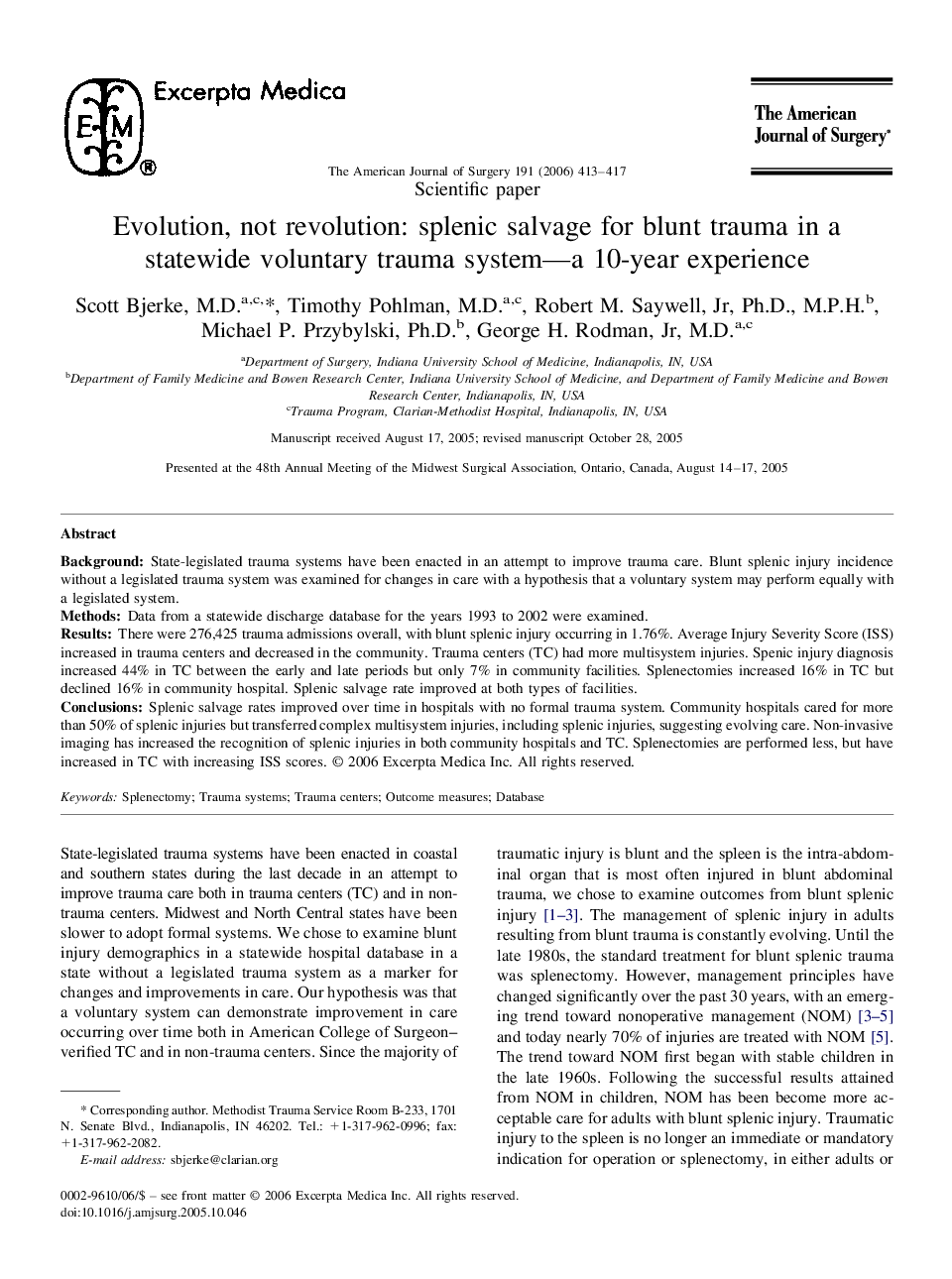| Article ID | Journal | Published Year | Pages | File Type |
|---|---|---|---|---|
| 4282008 | The American Journal of Surgery | 2006 | 5 Pages |
BackgroundState-legislated trauma systems have been enacted in an attempt to improve trauma care. Blunt splenic injury incidence without a legislated trauma system was examined for changes in care with a hypothesis that a voluntary system may perform equally with a legislated system.MethodsData from a statewide discharge database for the years 1993 to 2002 were examined.ResultsThere were 276,425 trauma admissions overall, with blunt splenic injury occurring in 1.76%. Average Injury Severity Score (ISS) increased in trauma centers and decreased in the community. Trauma centers (TC) had more multisystem injuries. Spenic injury diagnosis increased 44% in TC between the early and late periods but only 7% in community facilities. Splenectomies increased 16% in TC but declined 16% in community hospital. Splenic salvage rate improved at both types of facilities.ConclusionsSplenic salvage rates improved over time in hospitals with no formal trauma system. Community hospitals cared for more than 50% of splenic injuries but transferred complex multisystem injuries, including splenic injuries, suggesting evolving care. Non-invasive imaging has increased the recognition of splenic injuries in both community hospitals and TC. Splenectomies are performed less, but have increased in TC with increasing ISS scores.
